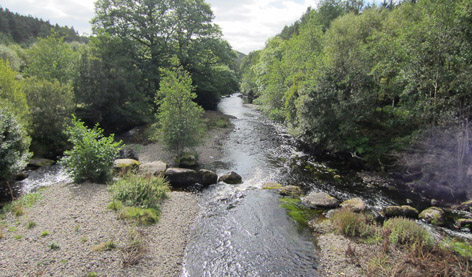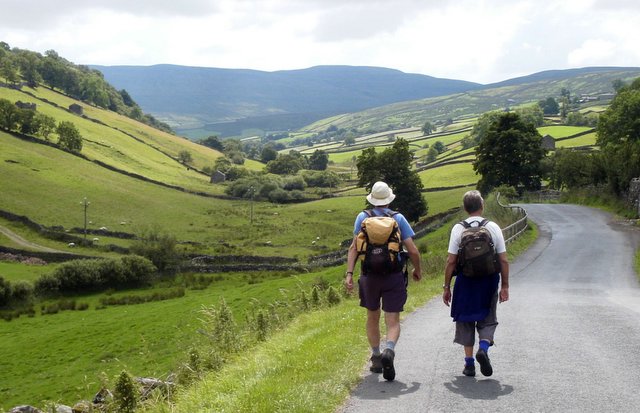 Scotland is a land made to have adventures in, with natural beauty all around including rugged coastline, magnificent mountains, glistening lochs and deep glens, its a country that beckons you outside to explore.
Scotland is a land made to have adventures in, with natural beauty all around including rugged coastline, magnificent mountains, glistening lochs and deep glens, its a country that beckons you outside to explore.
We’ve picked some of our favourites Scottish adventure walks and activities that are sure to get the heart pounding and the blood pumping.
1.Glenfinnan Viaduct Trail
You might be familiar with the Glenfinnan Viaduct from its feature in a certain Harry Potter movie! So a visit here will tick the Scottish adventure box if you have children with you too.
Many people just come along to have a look and take a snap of the famous and very beautiful viaduct, but if you hang around for a while there is a lovely short walk that offers amazing views of Loch Shiel. Some of the trail is pretty steep so young children probably wouldn’t be advised.
2.Arthur’s Seat
This extinct volcano lies within Holyrood Park and the view from the top is quite wonderful offering brilliant views of the city of Edinburgh from the top. You don’t have to be a mountaineer to enjoy this Scottish adventure either, this 3 mile walk is pretty pleasant with a bit of a rocky climb to the summit but nothing too taxing and definitely worth the effort.
There are also six other hills around Edinburgh that can be climbed within two hours, all offering fantastic views over the city where you’ll get a peaceful moment away from the hustle and bustle.
3.Coire Gabhail
The Coire Gabhail is also known as the Lost Valley, and when you arrive you’ll see why. With its atmospheric peaks and vast mountainous scenery it is really striking and quite the Scottish adventure.
The hike through the Coire Gabhail is a two to three hour trek that is really rough and rugged with very dramatic scenery.
The paths can be steep and rocky in places with some mild scrambling needed along the way. If you are a seasoned pro then you could tackle this route in the winter when there is snow lying on the ground when you’d need an ice-axe, crampons and a lot of prior preparation on the area. For those who would be a little nervous at this prospect the warmer months are for you when there is no snow on the ground.
4.Munro Bagging
‘Munro Bagging’ as the locals call it is certainly a Scottish adventure, definitely a challenge and is not for the faint hearted.
To complete this you’ll need to climb Scotlands Munro’s, a list of mountains that have been named after Sir Hugh T Munro.
The highest Munro is Ben Nevis at 1345m tall, and although lower than some of the other peaks they present their own challenges. The Black Cuillin offers a truly Alpine walking and climbing environment with rocky peaks rising out of the sea and so many wonderful trails of all difficulty levels. Some peaks can be reached by a tough walk whilst others will involve ropes and climbing.
There are 282 peaks in total so this is more of a project to work on and you won’t be alone, many people strive to complete this list and over 6000 ‘Munroists’ or ‘compleatists’ have done it so far.
5.West Island Way
The West Island Way walk is a real Scottish adventure that covers 96 miles starting from Milngavie and finishing up in Fort William.
The beauty of this trail is the iconic attractions you’ll see along the way; Mugdock Country Park, Loch Lomond, Ben Lomond, Glen Falloch, Rannoch Moor, Glencoe, Devil’s staircase, Lairigmor, Glen Nevis and more.
You won’t be alone in your walk here though, some 30,000 walkers each year take on the West Island Way because of its stunning scenery of dramatic mountains, lochs and panoramic views.
The trail can be walked in a week and there are campsites along the route. If your preference is more on the wild side and you are planning on wild camping then just be aware of the Scottish Outdoor Access Code that will have rules and information that you’ll need to be respectful of.
6.Highland Perthshire Bungee Jumping
As well as amazing walks in the Highland Perthshire area there is also an opportunity to bungee jump if you’re feeling brave. This was the UK’s first static bungee jump and takes place on a specially constructed platform suspended below the Garry Bridge over the beautiful River Garry near Pitlochry.
If you a brave enough for this Scottish adventure, the bungee workers will tell of finding a connection with the dramatic and inspiring landscape through the exhilaration of the jump. If you manage to keep your eyes open you might well experience this!
If you’ve always wanted to try a bungee then this is a really special place to do it.
7.Glentress Forest Mountain Biking
If you fancy something a little different than walking for a change then why not hire out a mountain bike and head off into the Glentree Forest. This is perfect place for a Scottish adventure and you’ll ride with obstacles, dips and jumps all set into the beautiful landscape. At the Glentree Forest site there are trails for all levels so the whole family will be happy. Ride the family friendly, easy green trail while you soak up the views, or hit the severe black trail that includes huge climbs and even bigger descents - you won’t have much time to notice the view on this ride.
8.Isle of Tiree Kite Surfing
Finally, we head to the coast. Scotland has a divine coastline ranging from rugged rocky coves to beautiful pristine sandy beaches, it would be wrong not to pay them a visit.
But rather than a nice chilled stroll why not up the pace and try your hand at kite surfing.
Kite surfing takes a little bit of wakeboarding, paragliding and surfing, and combines them into one, really fun adrenaline sport.
The Isle of Tiree itself is home to Gott Bay, a beautiful horseshoe in shape with flat, shallow water, perfect for kite surfing.
Definitely use the school there for this Scottish adventure. You’ll learn more, pick up the sport more quickly and can start enjoying it faster.
Once you’re suitably exhausted then head for the Tiree Lodge Hotel for some chill time.










































